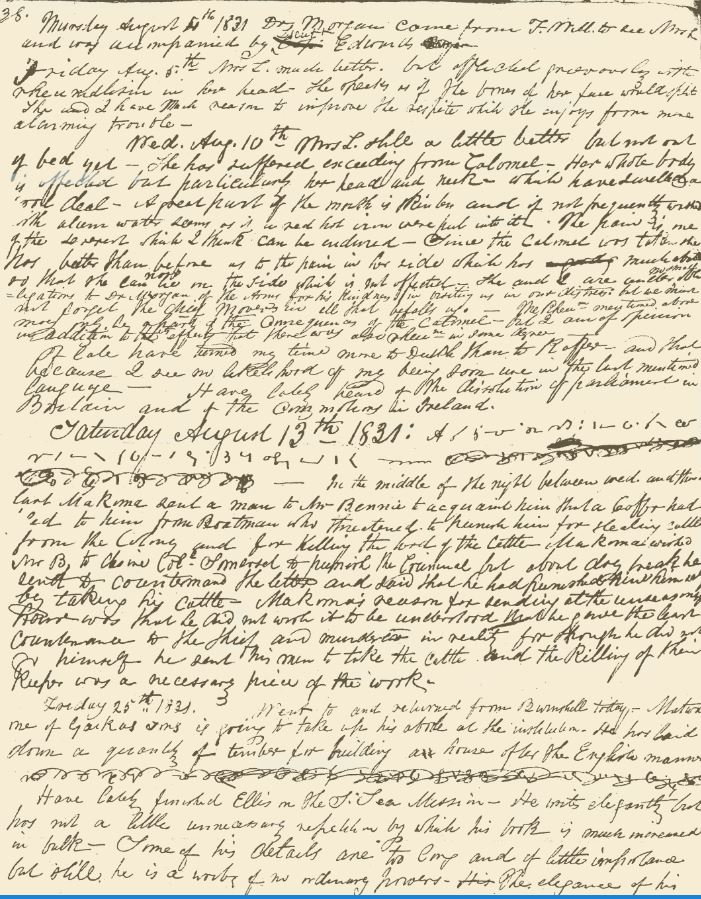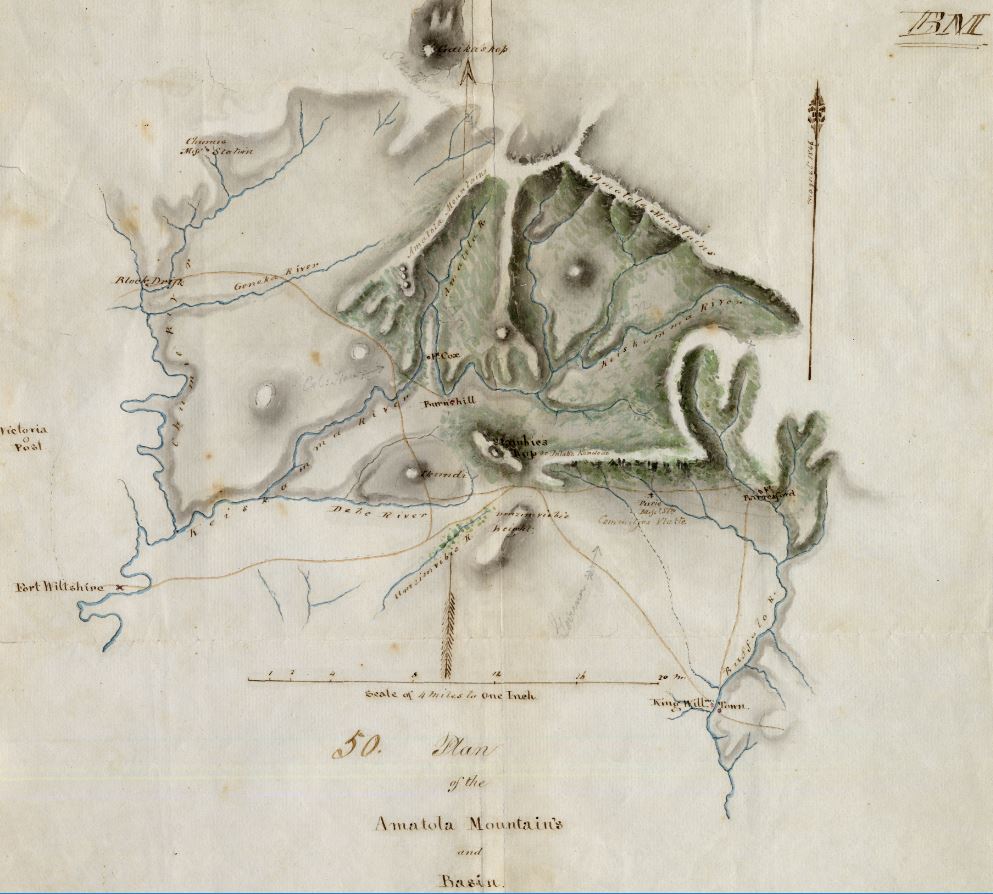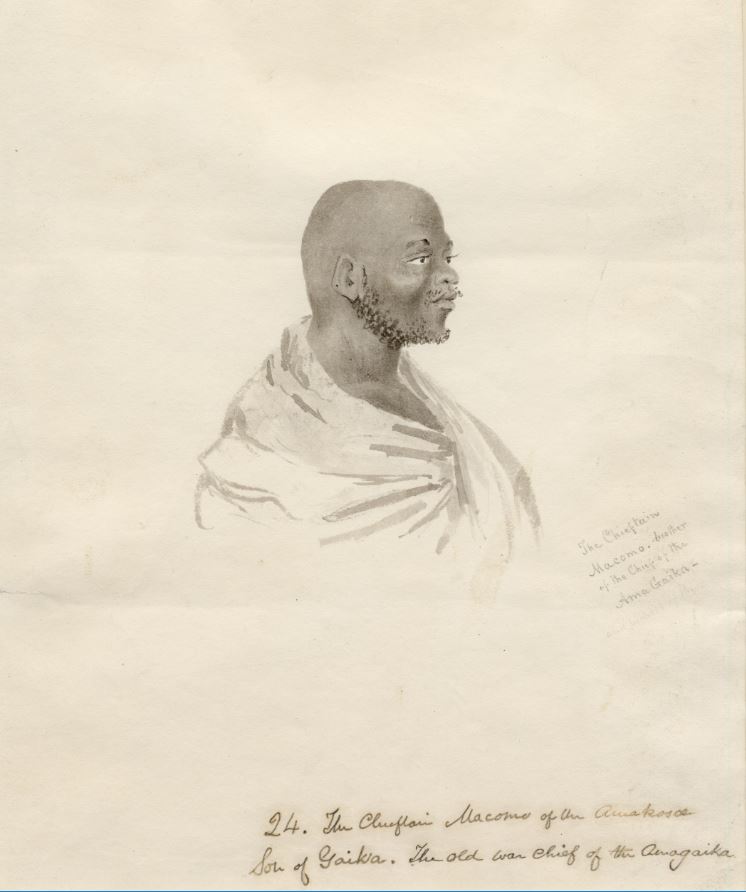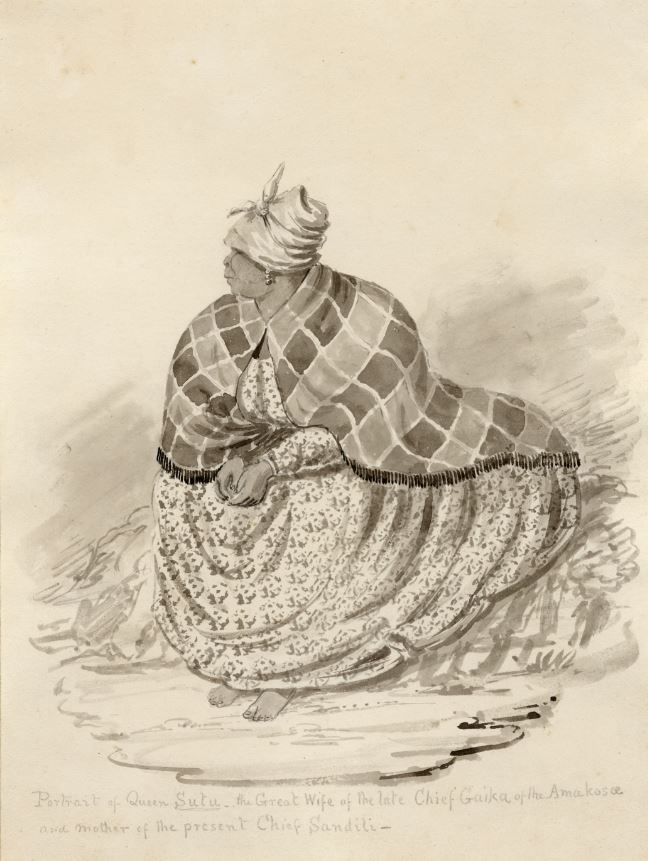by Dr Sandy Shell

Dr Sandy Shell is a Senior Research Associate at the Rhodes University Cory Library. She was the head of the African Studies Library at UCT Libraries between 2004 and 2011. She also serves as a Council Member of Historical Publications South Africa.
The early missionaries, generally and generically, have had a pretty bad press in our country for many decades. There have of course, been well-known exceptions, the luminaries who did not fit the prescriptive box of categorisation: we think of the Reverend Theo van der Kemp, Dr John Philip and the Reads. These names spring to mind spontaneously. The historian Elizabeth Elbourne wrote about the daunting task facing the missionary biographer way back in 1991:
Writing a history involving missionaries in South Africa is a charged project, bedevilled by a variety of ghosts. Until relatively recently, the occasional historian of missionaries wrote a pious hagiography, while mainstream historians tended to think of missionaries only in terms of their function as agents of the colonial state. Recent work has more than begun to redress the balance.
At that time, Elbourne continued, John and Jean Comaroff were about to “publish a much-needed anthropology of missions,” while historians such as Candy Malherbe were “making sensitive and imaginative use of missionary society archives in reconstructing African experiences.” This was the challenge facing me when I embarked on editing the journals of the Reverend James Laing.
As a research librarian in the field of African studies—first in the Cory Library for Humanities Research at Rhodes University and later in the African Studies Library at the University of Cape Town—I have been in a peculiarly privileged position as a researcher. My professional background enabled me to value at first-hand the considerable skills and professional qualities of the library staff in both institutions and this made working on the journals of the Reverend James Laing a particularly rewarding experience. Authors and editors who are also librarians, archivists or museologists are also privileged on account of their familiarity with and knowledge of the sources in their care. This certainly proved true for me.
While producing a guide to the diaries and journals in the Cory Library many years ago, I found two bound volumes of a largely unfathomable journal written by an early missionary of the Glasgow Missionary Society with appalling handwriting, James Laing. These volumes were housed as part of the extensive and valued Lovedale Collection held in Cory.

They were unnumbered but the entry dates ranged from 1845 to 1872. External sources indicated there had been earlier diaries—and serendipity is a wondrous thing. In 1981, Peter van Lill of the University of Fort Hare discovered the two earlier volumes dating from Laing’s departure for the Cape in 1830 and ending in 1845. He had recently moved to Alice to take up a position as lecturer in African Studies in the University and while sorting through his new home, he was surprised to uncover these volumes in an attic. We in the Cory Library came to hear of this archival find and decided to reach out to Mr van Lill. Somewhat reluctantly at first, he eventually agreed to deposit these in the Cory Library to complete the record—as that guide to journals and diaries reflects.
Laing’s diaries in Cory had remained virtually unread because of Laing’s execrable script and his use of idiosyncratic abbreviations which had hitherto confounded—and defeated—historians and other scholars. To compound the illegibility of most of his writing, Laing used a shorthand system—developed by Andrew Hunter of Edinburgh—which antedated the more commonly used Pitman phonetic system. After much searching, I eventually found a librarian in the British Library who could read Hunter’s shorthand and, while taking a fortnight’s holiday on the south coast of England, she kindly translated as much as she could decipher of the code with the help of her son. Even worse was Laing’s predilection for the use of single initial letters to signify different words which, through following his patterns and repetitions and by applying a tentative logic allowed for an attempt at an accurate translation. However, I found it particularly challenging to be faced with the use of the solitary capital letter “S” six times, to signify six different concepts, in a single day’s entry. Fortified by patience and fierce determination, I eventually managed it.
Many people have asked me why Laing kept such a regular journal for 42 years. Did he write purely for his own eyes? Or for the eyes of others as well? Laing explained his intentions for his journal in several of his early entries:
When I have a particular friend before me to whom I can make my remarks I am more likely to attend to propriety than I would be were I to write only for my own inspection. The inward feelings of my soul may not thus so openly appear … I purpose occasionally making a few notices of some things in my life which are of some importance. … I would not wish to destroy precious time in writing about things of little moment. All writing is meant to be read, if not by the public, at least by the individual who writes it. … . [1]
He was also, of course, required to submit regular formal reports back to Scotland informed by his journal entries—his notes of daily events.
I came to like Laing even while he frequently frustrated me. I liked him for his curiosity, his diligence and his determination. During his voyage to the Cape, he tried desperately to learn the language he believed he needed to be able to speak at his destination: Dutch. Only when he arrived at the Cape did he learn where his posting would be: way up beyond the eastern frontier in the Amathole mountains where his Dutch, while certainly useful, would serve him little. He discovered he had to learn isiXhosa. He tried long and hard, taught initially by John Bennie and later by his interpreter Klaas. His journal entries recording his frustration trying to master the clicks are not only valuable for linguists and those today needing help with pronunciations, I also found them endearing:
Uthixo is the [Xhosa] word for God. The syllable XO in that word I cannot pronounce. The consonant X is uttered or formed in the right cheek in the same manner as the sound is produced which is made to make a horse increase his speed. … Could diligence do anything towards the facilitation of the acquisition of these sounds, I should endeavour night and day to obtain them; but though I were to sit a day and try to utter XO at night, I should be no nearer it than in the morning; and though I should endeavour for a whole year to attain to its pronunciation I have almost no hope that at the end of the year I should be any nearer the object of my wishes. Yet I may do much in acquiring the language: I may learn to speak all words which are free from such amazing difficulties and I may acquire such knowledge of the whole as to be able to understand it when spoken by others. You see then that I have one difficulty to contend with by no means small. It is I may say the greatest barrier which I see between me and the [Xhosa] people.”
I liked Laing, too, for his detailed observations of the people he encountered, as well as of his physical environment—as when he first arrived at his station, Burnshill [Umkhubiso or “valley of streams”]. He described it as
beautifully situated on the Keiskamma River [“clear water”]. … Burnshill is one of the most romantic spots that I have seen, and there are many people in its neighbourhood, which is a better recommendation to it than its fine scenery. Near this place, [Ngqika] died above 18 months ago.

Laing was, of course, steeped in Scottish, pre-Victorian era Calvinism so, initially, he saw and reacted to his adopted country through that prism. Much of what he observed offended his religious sensibilities. He found some of the dancing “lascivious,” instances of nudity shocked and startled him, the power of the sorcerers, and the faith in the rainmakers frustrated him, and he deplored the widespread disregard of the Sabbath. So Laing was aghast at the ox racing, singing and dancing, drinking and feasting among people whose culture did not embrace the Christian liturgical calendar, where a Sabbath was simply another day the sun rose and the sun set and life’s joys and strifes and sadnesses continued to play out among the community.
Nonetheless, Laing was a gentle and loving man who earned the trust of the amaNgqika. They knew he was profoundly interested in the strange new societal norms and rituals that puzzled him and that he was determined to increase his understanding of the people amongst whom he lived. The amaNgqika accorded him the privilege of witnessing and recording various rituals: for example, he was allowed to record the ceremony marking the menarche of one of Maqoma’s daughters; a ritual during which a sorcerer or igqwirha identified for punishment a person he deemed to be guilty of bewitching a third party; the dancing for rain with the rainmaker, and many other traditions. He also interviewed significant elders about the origins of the amaXhosa back to Phalo and the genealogical lines of the royal houses of the amaRharhabe and the amaGcaleka. Information hitherto unknown or unconfirmed till now emerged from these.

Over time he came to understand the traditions and cultural rhythms of the people around him as well as the structure and functioning of their society. These observations AND deeper understanding led to his submission of a “Paper on the [Xhosa] Customs” to Sir Benjamin D’Urban on 26 October 1835. Laing advised D’Urban, against the application of “unjust and unnecessary restraints.” He urged the colonial authorities to respect the societal structure of the amaXhosa, particularly the crucial rite of passage from boyhood to manhood through the practice of circumcision.
He grew close to uSuthu, feisty widow of King Ngqika, and to Ngqika’s Right Hand Son, Maqoma, with whom he shared mutual respect, trust and amity.

During the War of Dispossession of 1834-1835, this trust manifested significantly when Maqoma sent his wife, his children and his horses to Laing for safekeeping. Even the sociologist Xolela Mangcu acknowledged this in his biography of Bantu Stephen Biko.
… the colonial enterprise consisted of a double assault on the humanity and dignity of African people—military conquest in the 100-year wars of resistance, otherwise known as the frontier wars; and cultural indoctrination primarily through religion and education. This is not to underplay the role played by some missionaries in giving sustenance to the Xhosa warriors. For instance, James Laing, who lived in Burnshill, looked after Maqoma’s children while the latter went out to fight the colonists. (Biko: 50-51).
When the Laings were evacuated by the colonial military and escorted, reluctantly, to Grahamstown early in 1835, another of Ngqika’s minor sons, Matwa, and many of the mission people with their cattle also relocated. Deploring the duplicity of the colonial authorities in their treatment of Matwa and the Burnshill people, Laing raged against Governor Benjamin D’Urban, and was the sole objector at a public meeting calling for acceptance of the annexation of the land between the Keiskamma and Kei rivers which D’Urban had named the Province of Queen Adelaide. He was the only one in the audience who raised his hand to express dissent and displeasure. Laing wrote in his journal:
“I disapproved of that part of the resolution which I understood to call for indiscriminate and complete extermination [of the amaXhosa].”
He was also locked up in jail in Grahamstown—not for long, but long enough for Laing to feel even further alienated from the sentiments of the colonists. The late Randolph Vigne pointed to the parallels between the tribulations suffered by the amaXhosa at the hands of the English colonial government and the sufferings the Scottish people experienced in conflict with the English. This Scottish-English conflict obtained not only on the battlefield but also in the contempt in which the English had long held their northern neighbours, regarding them as “barbarians,” an easy parallel with D’Urban’s contemptuous epithet of the amaXhosa as “savages.” Certainly, with Laing’s insatiable interest, affection and compassion, came empathy and he deplored the aspirations, opinions and behaviour of the colonisers in Grahamstown writing that:
“The feeling in this town against the black and yellow people is bad indeed. Surely people so much under the influence of prejudice are unfit for the enjoyment of that power which they seek.”
When the Burnshill people were eventually allowed to return home to the Amathole, and uSuthu came to welcome them home, the relief must have been palpable. Not long after their arrival, Laing wrote a particularly lyrical passage in his journal, expressing—as I received it—the kind of inner joy, awe and wonderment we feel when we are at one, and at peace, with our world.
After nearly a year of alienation, frustration and anger in the toxic environment of the garrison town of Grahamstown, he was home amongst the people he loved in the beautiful Amathole, where he lived so close to the wonders of nature and creation:
This morning I paid some attention to the operations of a large and beautiful spider when a small grasshopper was entangled and struggling in its web. In this condition the spider rushed upon its victim and took speedy and effectual means of securing it, by spinning from its jowls copious quantities of cream like material. These materials entwined round the poor grasshopper and made fast upon it with its feet. After the grasshopper had been enveloped in these materials as in a bag, the spider ceased from its spinning and entangling work, and seized the grasshopper with its teeth and continued holding it for some time as if it had been sucking its blood. In observing this operation before, I thought that the spider had only used the old web to secure its prey but on this occasion, I distinctly saw this entangling stuff rushing from its body. This stuff was of a much lighter colour than the web which remained entwined after the grasshopper had been secured.
With his growing fluency in isiXhosa, came Laing’s gradual acculturation into the societal microcosm he shared with the amaXhosa. The full impact of the subliminal depths of this acculturation is evident from one of Laing’s obituaries in which the writers describe a delirious Laing lying on his deathbed in January 1872, fancying he could see all his friends arranged around him. He babbled volubly to these friends—in isiXhosa.
Not a demonstrative man, Laing was nonetheless an affectionate man and after his death J. Masingata penned an obituary in Isigidimi samaXhosa referring to him as “Indoda Ebisithanda”—“the man who loved us.” Laing was no firebrand. Instead he lit a small flame of peace, justice and gentleness among his volatile sector of society. Approximately 1,500 people attended his funeral at Burnshill, a tribute to his efforts towards the establishment of a lasting conciliation among the divided peoples of the Eastern Cape as was his gravestone, inscribed, as had been that of his first wife Margaret in 1837, in isiXhosa.
I tried to do what Candy Malherbe managed so ably: “to make sensitive and imaginative use of missionary society archives in reconstructing African experiences.” But the verdict on whether or not I managed to do this lies with the readers. And there is still so much to do: Laing’s journal covered 42 years and there is still a wealth of further new information about amaNgqika and this turbulent period in our history within those pages which begs for further research. I have transcribed electronically (unchecked and unedited) from 1843 to 1851 and I read all 42 years of his journal onto 67 x 90 minute cassette tapes. Recently, I had these analogue recordings digitised as mp3 files and these are due to be deposited in the Cory Library for the benefit of future researchers to help them decipher the rest of Laing’s journal.

Historical Publications South Africa, formerly the van Riebeeck Society, aims to share rich, substantive archival sources about South Africa.
View the full catalogue of HiPSA publications.
Learn more about their work and considering joining the society.
[1] MS16,579/1, v1, 1830-1836; MS 16,579/2, v2, 1836-1845; MS 9043/1, v3, 1845-1858, MS 9043/2, v4, 1858-1872.


